Tiller And Cultivator/Rotavator Buying Guide
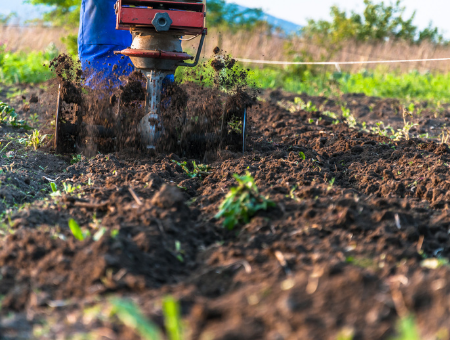
Tillers are useful for gardening tasks like planting and seeding. As spring arrives, many use tillers to prepare gardens for summer. When buying a tiller or cultivator, it’s important to understand what features suit your needs. My guide covers factors to consider for choosing the right model for your garden size and conditions. It will ensure you select a product with the right power and features. I’ll also list and review top rotavators and tillers to aid your selection. The reviews detail features, performance, pros and cons
Before we dive into the guide, below are my top choice Rotavators and Tillers with a link to a full review of each. The review will provide in detail, all the features and how well they work, pros and cons and a summary of who the piece of equipment is best suited to.
5 Best Tillers & Cultivators
1. TACKLIFE Electric Tiller, 1500w Rotavator, TGTL01A Review

The TACKLIFE TGTL01A is an electric tiller and rotavator that has a 320mm to 440mm adjustable working width and is powered by a 1500w motor. This tiller/rotavator will work to depth of 200mm, weighs 10.2kg and has foldable handles to reduce the amount of storage required.
- Adjustable cutting width
- 1500w copper motor
- Various safety features
- Easy assembly
- 6 or 4 blades
- Lightweight and compact
2. VonHaus Electric 1400W Tiller Review – Cultivator/Rotavator

The VonHaus 1400W Electric Tiller is a portable rotavator that has a 400mm working width and is powered by a 1400W motor. This tiller/rotavator will work to depth of 220mm, weighs 11kg and has foldable handles to reduce the amount of storage required.
- 400mm cutting width
- 220mm tilling depth
- Six blades
- 10-metre cable
- 1400W motor
- Lightweight
3. Einhell GE-CR 30 Review – Cordless Tiller

The Einhell GE-CR 30 is a 18 volt cordless battery tiller that has a 300mm working width and is compatible with the Einhell Power X-Change. This tiller/rotavator will work to depth of 200mm, weighs 8.2kg and has foldable handles to reduce the amount of storage required.
- Power X-change batteries
- Adjustable transport wheels
- 30cm cutting width
- 20cm cutting depth
- Rechargeable batteries
- 2 point safety switch
- Foldable handle
- 4 robust cultivator blades
4. Greenworks G40TL Review – Cordless Tiller

The Greenworks G40TL is a 40 volt cordless battery tiller that has a 260mm working width and is compatible with the G-Max 40v range of batteries from Greenworks. This tiller/rotavator will work to depth of 200mm, weighs 13.3kg and has foldable handles to reduce the amount of storage required.
- 40v Lithium-ion G-Max battery power
- Four robust metal blades
- Height adjustable wheels
- Easy start
- Rubber grip handle
- 26cm cutting width
- 20cm cutting depth
5. Hyundai HYT150 Review – Tiller Garden Rotavator Petrol Cultivator

The Hyundai HYT150 is a petrol powered tiller/rotavator that has a 560mm working width and will work to a depth of 260mm. This self-propelled tiller weighs 29.5kg, has a powerful Hyundai 150cc (IC150V) 4-Stroke OHV petrol engine. The four steel rotating tines/blades, each having 4 angled teeth to break up and turn over the soil, are design to work effectively in the most demanding soil conditions.
- 150cc 4-stroke engine
- 3000rpm
- Self-propelled
- Ergonomic handle with easy to reach controls
- 56cm tilling width
- 26cm tilling depth
- Adjustable depth control
- Front-wheel for transportation
- 3-year warranty
What Is A Tiller?

A tiller is a powered garden tool that essentially performs a similar task to the spade, only it is far more powerful and will make light work of what could be a difficult challenge.
These tools will turn over the soil and get it ready for planting. They will easily separate and prepare compacted soil and are often used by gardeners who are getting ready to sow new seeds.
In addition to the regular tiller, gardeners might use tools called cultivators or rotavators. A rotavator is a much larger piece of equipment and is able to dig far deeper than either a tiller or a cultivator. For this reason, they are usually used on larger scale projects.
What Is The Difference Between a Tiller And A Cultivator?
A garden tiller will churn the soil in preparation for seeding, and it does this using tines; these are wheellike blades that feature spikes and can easily penetrate through tough soil. There is the option to purchase a tiller with a plough attachment, and this is something we will look at in a little more detail later on.
As the tiller works the soil, it will overturn the top layer, effectively burying it under the ground and bringing fresh soil to the surface. They are ideal for a variety of sized gardens and are frequently used in areas measuring between 500 and 3000 square metres, so it isn’t difficult to see how diverse they are.
As we mentioned, these are powered tools and usually come as either corded, cordless or petrol models. The petrol tiller is far more powerful and will come with either a 2-stroke or 4-stroke engine. But again, more on that later.
In contrast, a cultivator does not turn the soil over but rather mixes it up and loosens it. Where you would use a tiller on much harder soil that is difficult to break up, you would apply the cultivator to soil that was not compacted and simply needed to be stirred up ready for planting.
A cultivator will also make your soil far finer, which will leave the garden looking more aesthetically pleasing. They will also be powered in the same way as a tiller either by electric, battery or petrol.
When you think that a tiller would be comparable to a spade, you might compare a cultivator to a manual garden hoe or claw – this makes it far easier to see the difference.
Tips On How To Use A Tiller

If you have never used a garden tiller before, it can be a little intimidating, especially since some of these tools look huge and confusing. But there is no need to worry because using a tiller doesn’t take a lot of learning and before you know it, you will be confidently ploughing the garden without even thinking about it.
With that in mind, there are some things to think about when getting used to your new tool, so let’s take a look at some handy tips for getting started with your tiller.
- It is important not to till soil that is too wet; this can cause it to compact even further and will have the opposite effect to what you would expect. To check whether the soil is too wet, you can pick up a small ball of soil and drop it to the ground; if it does not break up, you will need to wait for it to dry a little longer.
- Before you start tilling the ground, it is important to prepare it. If there are a lot of weeds, tilling could make the situation worse since it will chop up the weeds and disperse them throughout the area. In future, you may then notice more unwanted weeds coming up to the surface. Instead, you should use hand tools to remove these weeds and discard them before going anywhere near your tiller.
- You should start at the front corner of the area that you wish to till and move slowly back, being careful to keep at least 50cm away from plants to avoid disturbing their roots. You must also be mindful to stay away from the edge of the soiled bed if you want to prevent dirt from being flung onto your perfectly manicured lawn.
Things To Consider When Buying A Tiller Or Cultivator
Before you rush off to buy this type of equipment, it is important to stop and think about how, where and why you will be using the tool.
There are several things that you should keep in mind, and following these buying guide tips will allow you to source the right tool for you and your garden.
Tiller Or Cultivator
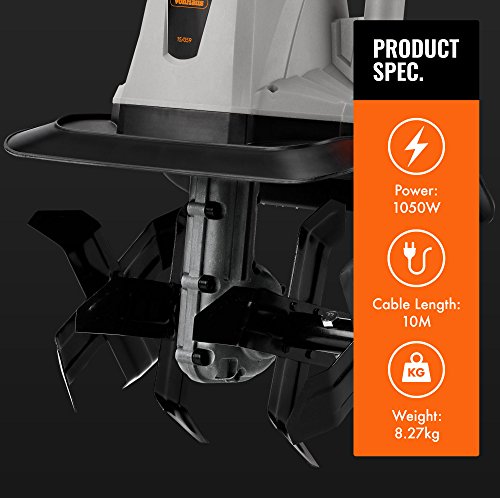
Of course, one of the first and probably most important considerations is whether you would benefit more from buying a tiller or a cultivator.
As we have discussed, while the two tools look similar and perform similar tasks, they are largely different. If you need to break up heavily compacted soil then, without a doubt, the tiller will be the best option. However, if your soil is already relatively loose and you simply need to mix it up ready for the seeds to go in, then a cultivator will meet your need far better than a tiller.
Additionally, you might consider getting a 2 in 1 tool, these are especially handy if you have varying types of soil that need to be worked.
There are several advantages of buying a multi-purpose tool, and many garden experts would suggest that you need to till your soil during the autumn and cultivate it when spring arrives – having the option to do both is far easier.
However, switching between the two is not always easy and may require some additional tools, but once you get the knack of it, it won’t take much effort at all.
Power
Whether you are buying a tiller or a cultivator, you will need to decide on what type of power you wish to go for. As with any other garden tool, petrol models are far more powerful and will make the job much easier, however, you should consider that they are also more expensive.
Cordless tillers are great if you have a larger garden and do not want to be tied down by an electric cable, but because you are reliant on a battery, it pays to keep in mind that they won’t run for as long as other models.
In contrast, if you have a smaller garden, a corded tiller is a great way to get uninterrupted power.
Engine

If you have decided to buy a petrol tiller or cultivator, it is imperative that you think about the engine. In the main, these tools come with either a two-stroke engine or a four-stroke engine as is common in all garden tools.
A two-stroke engine needs to be fuelled with both oil and gas and getting this balance just right does require some practice so if you have never used one before; you will want to be prepared for something of a learning curve. What’s more, a two-stroke engine is far noisier and less environmentally friendly than a four-stroke engine. That being said, they do boast slightly superior power and due to their simple design, usually are easier to fix when and if things go wrong.
Accessories
Earlier, we touched on the fact that some tillers will come with a plough attachment, which is used to dig furrows in the soil and this will give the plant roots easier access to the lower levels of the soil. If you want healthy, long-lasting plants then ploughing is a wise idea.
These attachments come in three forms and understanding how each of them works will give you a better idea of which will suit your needs.
- A single furrow plough will make one furrow on each pass – you cannot go back over the same area without creating a ditch. For this reason, you must go back without ploughing between each furrow.
- A reversible plough allows you to plough in all directions so may be a little more convenient.
- A tilting plough has a ploughshare that can be tilted depending on the direction of the furrow.
Type Of Tiller

If plough attachments and soil types weren’t enough to make your head spin, then you might want to sit down with a cup of tea to learn that there is more than one type of tiller.
But, it isn’t as complicated as you might first imagine. As with the plough attachments, gaining an understanding of each type will allow you to work out which type of tiller will work best in your garden.
- A front tine tiller has its tines at the front and two wheels at the back. These tools are suitable for smaller areas and will make light work of firm soil that is not completely compacted. However, due to their design, the wheels will move over the freshly tilled areas, and this could cause them to recompact. But they are far easier to move around thanks to the lightweight design.
- Rear tine tillers are far bulkier and heavy, making them much more challenging to manoeuvre. However, with the wheels at the back, the weight of the machine makes them much more sturdy and ideal for very compacted soil or ground that contains a lot of debris and rocks. They offer a lot more power than a front tine tiller.
- Finally, the counter-rotating tiller features tines which move in opposite directions, and this provides you with the advantage of not relying on the wheels for movement as the tines will help to propel it. This makes it far easier to use without compromising on power.
Ease Of Use
As with any piece of equipment, you will want your tiller to be comfortable and easy to use, and there are many things you can look for to ensure that this need is met.
The weight of the machine should play an important role in the selection process, and you must consider your physical ability. There is little point in purchasing a tiller that is extremely cumbersome and that you are unable to use.
Furthermore, take a look at things like the handle, does it have a padded grip? Is it adjustable?
Conclusion
Whether choosing a tiller or cultivator, both would make excellent additions to your garden shed. While they serve similar purposes of preparing soil, each has their own strengths. In deciding between the two, it’s important to consider your specific soil type and compaction levels. If your needs call for the functions of both, rest assured there are multi-purpose tools available.
I hope my previous reviews have helped you begin to narrow down which type may work best. Purchasing the right garden tool really can make all the difference between a smooth soil preparation process versus a frustrating experience. Be sure to weigh an array of factors as you continue your search. Please feel free to reach out if you have any other questions. It’s my goal for these reviews to point you towards the tiller or cultivator that will best suit your individual gardening needs and soil conditions. I’m here to support you in finding the ideal option for your next project.
Best Tillers And Cultivators FAQs
What Does A Tiller Do In A Garden?
Garden tillers are designed to break up the soil and in turn aerates it. These machines are also excellent to prepare the soil for planting and can help in the prevention of weeds and other unwanted plants.
What Is The Difference Between A Tiller And A Cultivator?
The job of a tiller is to break up hard or compacted soil, making it looser, better for planting and improving air flow. However, on the other hand, a cultivator is used for everyday maintenance of already tilled soil ensuring that it doesn’t become compacted.
When Should You Use A Tiller?
If you are creating a new garden bed, then many experts would recommend using a tiller as a matter of course. In this case, you shouldn’t see them as an option but as a necessity. They will break up the ground and make planting so much easier.
Will A Tiller Go Through Grass?
Tillers can be used on a grassy area but it’s important to make sure that you set the correct height otherwise your machine will be ineffective. Generally speaking, you will want to set your tiller to between four and six inches when working on grass. Any less and it won’t be able to do its job correctly but if you set it any more then you’ll find it hard going and you may end up pulling up rubble and stones.
Can You Plant Immediately After Tilling?
Once you have broken up compacted soil with a tiller, it’s not a good idea to plant right away. I would recommend leaving the soil alone for up to two days as this will provide enough time for any organic materials to break down, ensuring that the soil is as fertile as possible.
How Deep Should You Till A Garden?
When you are creating a new flower bed, you will need to till a little bit deeper into the ground setting your tiller height to around ten inches. However, if you’re simply agitating the soil or mixing in new soil then you can set it a little lower than this, usually between six and eight inches.
Can You Till Weeds Into Soil?
By tilling the ground and then waiting before you plant, it is possible to get rid of weeds and have a healthier garden bed. However, it is recommended to till the area at least twice before even thinking about planting anything new. The reason for this is that during the first tilling, you could cause dormant weeds to rise to the surface and start germinating.
What Are The Disadvantages Of Tilling?
Tilling is generally good for your garden, but it could cause the soil to become more easily compacted in the future. This is because of how it exposes more of the soil to the sun and air which will reduce the moisture content. When this happens, it is more likely to become compacted so make sure you keep an eye on the moisture content of the soil.
What Kind Of Tiller Should I Use For Grass?
Using either a front tine or rear tine tiller will work well for most domestic situations involving grass. However, if you are about to seed a new lawn then it might be better to opt for a cultivator.
What Is A Garden Cultivator Used For?
A cultivator is a tool that is used to mix up soil that has already been broken up, usually with a tiller. It’s great for mixing in compost or fertiliser before adding plants into the ground. Cultivating is also an excellent way to prevent weed growth.
As a seasoned expert in the field of garden power tools, I have dedicated over a decade to working with and reviewing a wide variety of lawn mowers. My extensive experience has allowed me to gain a deep understanding of the benefits and limitations of different types of mowers and garden tools.
Over the years, I have honed my skills in writing informative articles and creating helpful videos for various blogs and publications. This has given me the ability to not only recognise what makes a good lawn mower, but also to help you choose the perfect garden tool for your specific needs and requirements.
With my wealth of knowledge and expertise, I am confident that I can provide you with valuable insights and recommendations when it comes to selecting the right lawn mower for your lawn. So, whether you're looking for a battery cordless, electric, petrol, or robotic mower, you can trust in my expertise to guide you towards the best option for your garden.

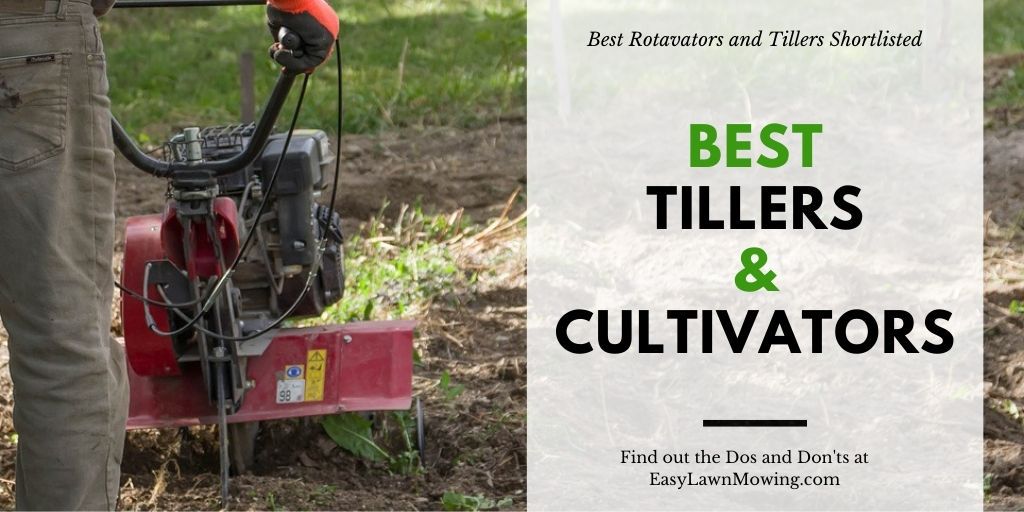

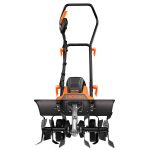
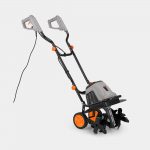


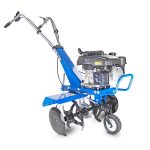

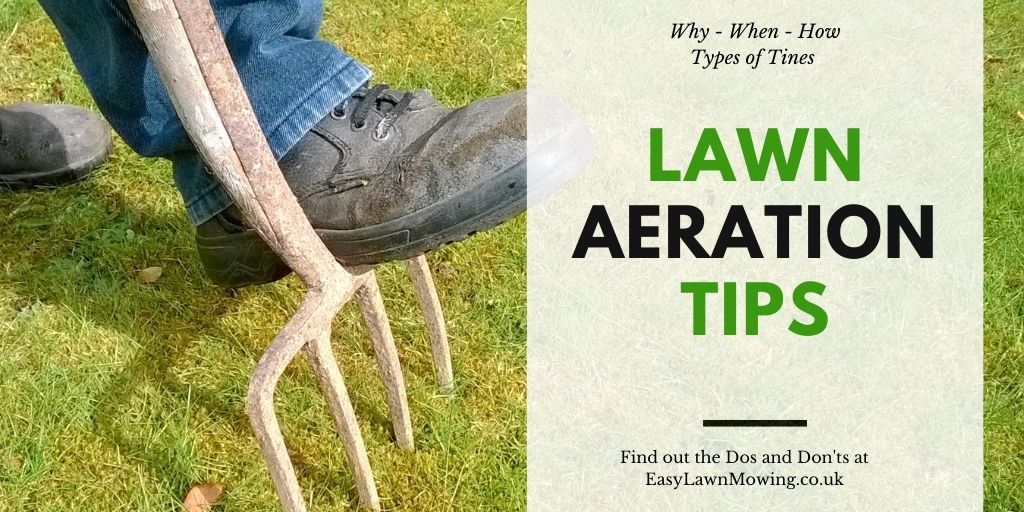
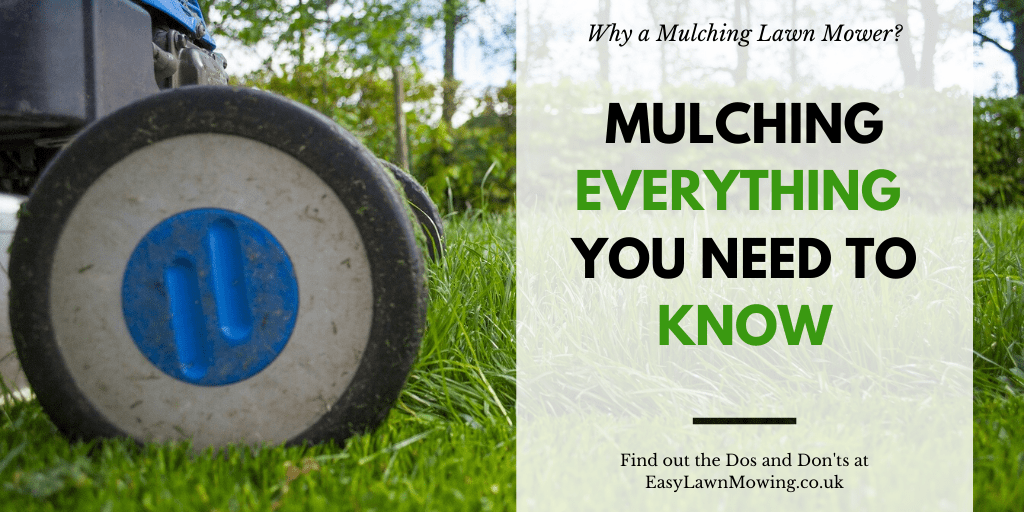
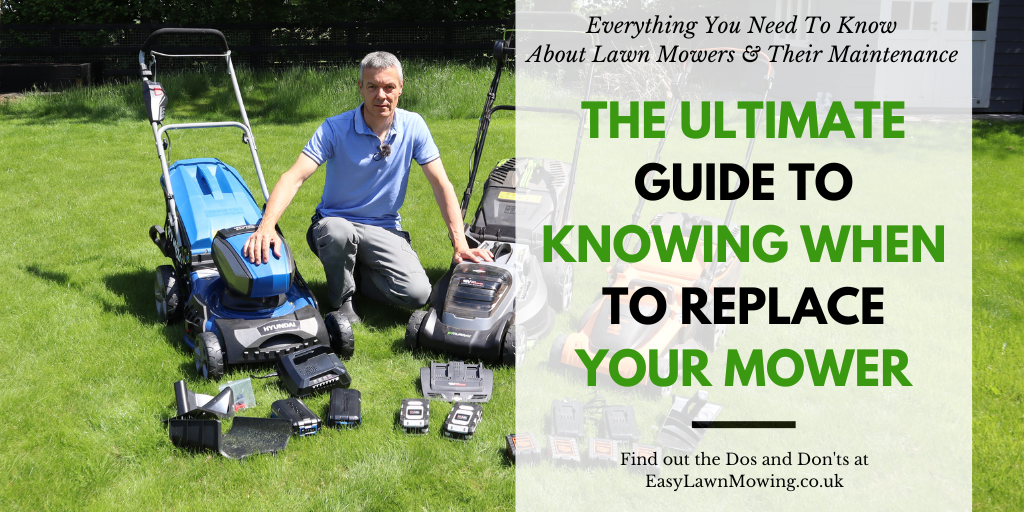

Thank you. A very comprehensive, well written article: Gets the main points of information across simply and succinctly. Helped me appreciate why I need a multipurpose tiller/cultivator. I have a small garden which has areas needing different treatments.